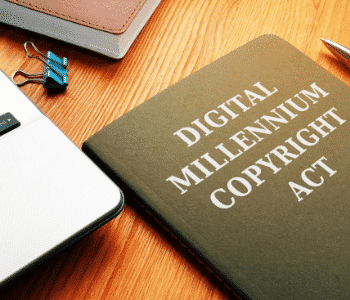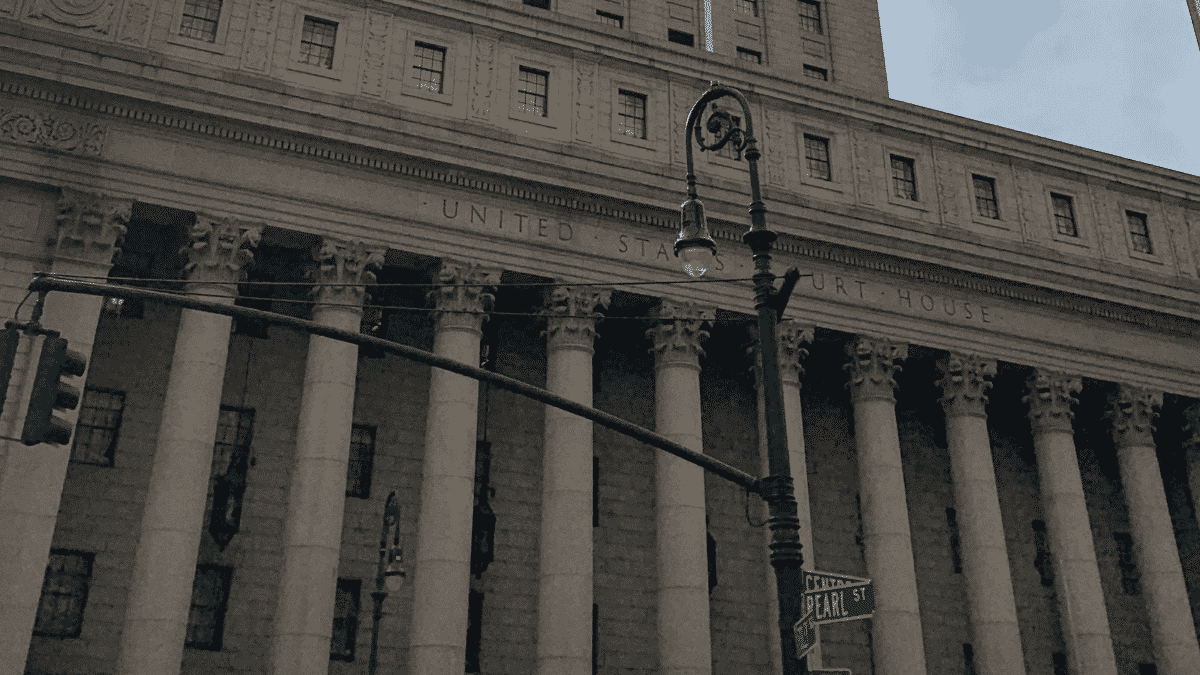How a New Ruling Could Change the DMCA
The DMCA is more than notice-and-takedown...

When most people think of the Digital Millennium Copyright Act (DMCA) they think of the notice-and-takedown provisions. That’s the portion that grabs most of the headlines and the section most people deal with on a day-to-day basis.
However, the DMCA is actually a large act with multiple sections. In addition to the notice-and-takedown regime, it also introduced restrictions on the breaking of digital rights management tools and the removal of copyright management information among other things.
The copyright management information (CMI) portions of the DMCA have been particularly interesting in part because they’ve been so rarely used. Though we talked about CMI in 2006 and again in 2007 as a means of suing for unregistered works, it’s an issue that rarely makes headlines and, when it does, it’s a side element to a much larger case.
However, a new ruling from the Second Circuit Court of Appeals may change that as it potentially removes one of the major obstacles to successfully suing over CMI.
According to the court, plaintiffs do not have to prove that the defendant had knowledge of 3rd party future infringement, something that is almost impossible to prove on the best of days.
Breakdown of the Case

The case deals with photographer Gregory Mango and the news site BuzzFeed.
According to the lawsuit, Mango licensed an image of a man named Raymond Parker to the New York Post. Parker, at the time, was the plaintiff in a discrimination lawsuit against the city of New York.
Some time later, a writer at BuzzFeed saw the image and wanted to use it. However, according to Buzzfeed, they reached out to Parker’s law firm, who gave them permission to use the image. The law firm, however, says they have no recollection of this and that it doesn’t sound like something they would do.
When the photo appeared on BuzzFeed’s site, Mango’s name was removed from it and, instead, it was replaced with a credit to the law firm. This prompted Mango to sue Buzzfeed for both copyright infringement and the removal of CMI.
The district court sided with Mango on both counts, awarding him $3,750 in statutory damages for copyright infringement, $5,000 in statutory damages for violating the DMCA and over $67,000 in attorneys’ fees and costs.
BuzzFeed appealed the DMCA portion of the decision to the Second Circuit arguing that the law required them to have knowledge that their actions would lead to future third-party infringement.
However, in a ruling last week, the Second Circuit Court of Appeals upheld the district court’s ruling here saying that there was no such requirement.
While this might seem like a small deal, it could turn out to be a large one, especially if other circuits agree.
To understand why, we must take a deeper look at the law itself and how it’s been applied in the past.
Understanding the Law
Looking at the language of the law itself, it’s easy to see why there’s been confusion. According to the DMCA:
No person shall, without the authority of the copyright owner or the law—
(3) distribute, import for distribution, or publicly perform works, copies of works, or phonorecords, knowing that copyright management information has been removed or altered without authority of the copyright owner or the law, knowing, or, with respect to civil remedies under section 1203, having reasonable grounds to know, that it will induce, enable, facilitate, or conceal an infringement of any right under this title.
The specific issue here is what “an infringement” means under the law. Though CMI cases have been rare, it was long assumed that the defendant had to have knowledge that their actions will enable or result in future infringements of the work to be held liable under this particular part of the law.
This creates a problem as proving that a defendant had knowledge can be exceedingly difficult or even impossible. We see this regularly in cases with false DMCA takedowns as victims of such takedowns must prove that the erroneous takedown was filed willfully, not accidentally. However, proving intent is often a struggle outside of the most egregious of cases.
The Second Circuit, however, has undone that logic. According to the opinion, “A defendant’s awareness that distributing copyrighted material without proper attribution of CMI will conceal his own infringing conduct satisfies the DMCA’s second scienter requirement.”
This removes what is often seen as a major hurdle in CMI cases. Without having to prove that the defendant knowingly assisted future infringements, more plaintiffs will be able to win such cases and they may well become more common.
However, this may still not be a huge boon for rightsholders, as there are some limitations to consider.
Limitations to Consider
The DMCA provides three separate actions that are illegal when it comes to CMI. This case deals with only the third.
Under the law one can also not:
(1) intentionally remove or alter any copyright management information,
(2) distribute or import for distribution copyright management information knowing that the copyright management information has been removed or altered without authority of the copyright owner or the law
The first is straightforward. You cannot intentionally remove or alter CMI. Nothing in this changes. The second is similar to the third save that the third adds a mention of public performance and the additional requirement at issue in this case.
In short, if you distribute a work there is no requirement that a plaintiff meet the burden of proving you knew or should have known that it would facilitate infringement in some way. However, if the act is just a public performance (which a great deal of online publication is) that burden must be met.
So CMI cases that don’t center around public performance of a work see no change because of this. Also, it’s worth noting that a plaintiff must prove that they know the CMI had been removed or altered without permission.
Copyright infringement is generally viewed as being a strict liability tort. Though an innocent infringer may receive smaller damages, a person is generally liable for copyright infringement even if they were unaware of what they were doing. All the plaintiff has to do is prove that their rights were infringed by the defendant.
That is not the case with CMI. There’s still a need to prove that either the defendant intentionally removed the CMI or that they distributed, publicly displayed, etc. knowing that the information had been removed or altered.
That is still a large hurdle in many cases. One such case was the 2018 case Stevens v. CoreLogic, where a photographer sued a company claiming that their software was stripping out metadata before uploading the images to real estate databases. There, both the lower court and the Ninth Circuit ruled that, while it was clear the data was being stripped, Stevens had not proven that the act was intentional.
Still, the Second Circuit ruling last week does remove a major barrier to many CMI cases and may help many creators, in particular photographers, successfully obtain damages on CMI claims.
This will be an area of the law to watch over the coming months and years.
Bottom Line
The DMCA was passed in 1998, some 22 years ago. Despite that, there are a lot of areas of it that are far from settled and this is clearly one of them.
It’s still very possible another circuit could rule contrary or that future cases could limit the benefit creators gain from this ruling.
In the end, this case is just proof that the law is constantly shifting and changing. Even something that is as rarely talked about as CMI can become a major focal point and drastically change how creators seek damages.
While there’s no way to know what the long-term impacts of this ruling will be, it’s going to be an issue to keep an eye on.
Want to Reuse or Republish this Content?
If you want to feature this article in your site, classroom or elsewhere, just let us know! We usually grant permission within 24 hours.
